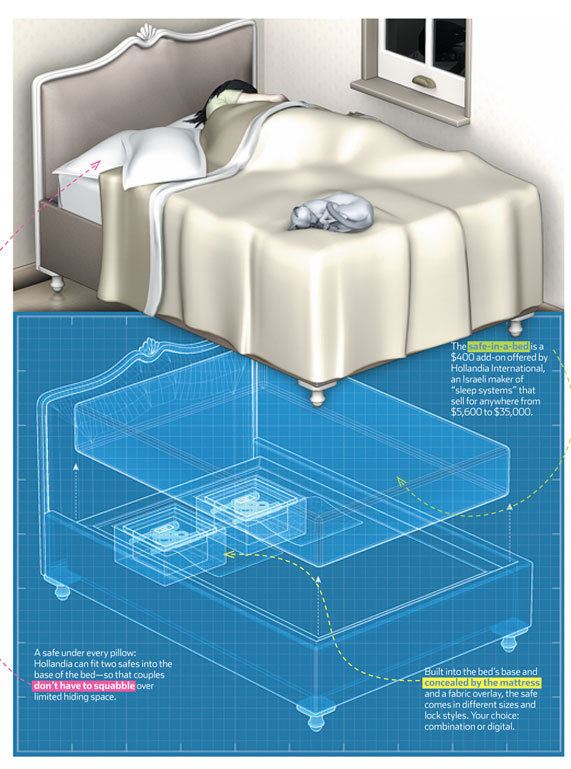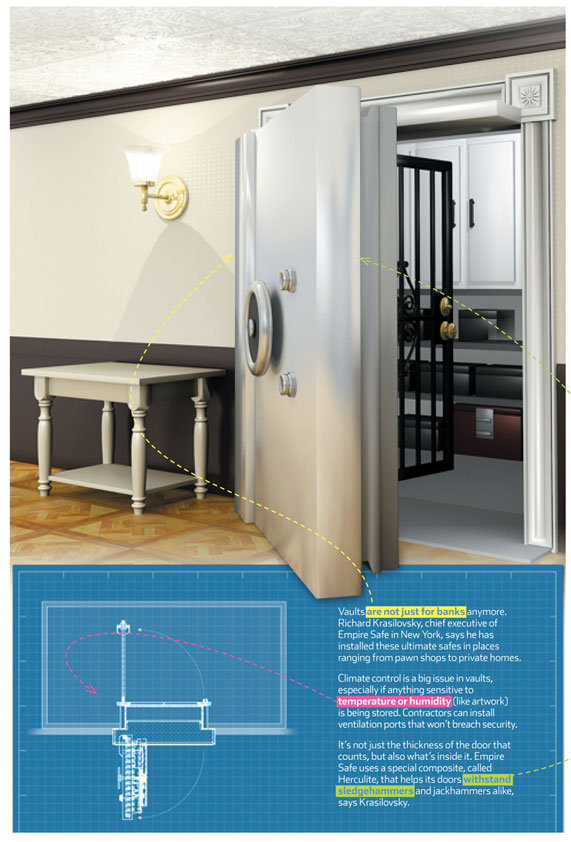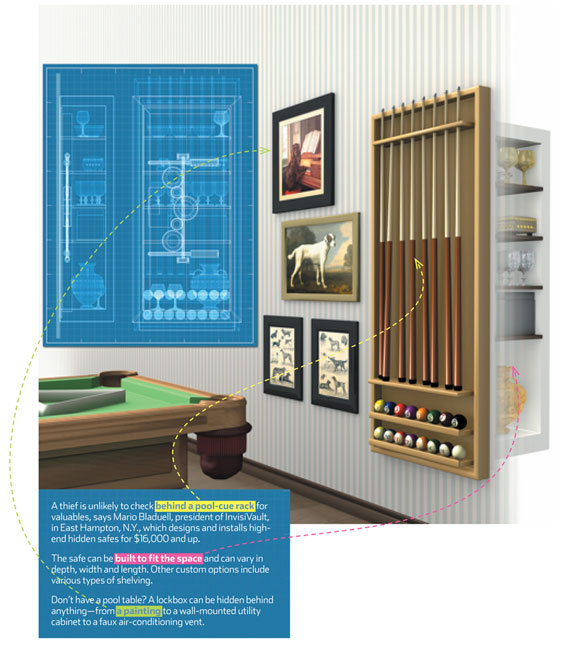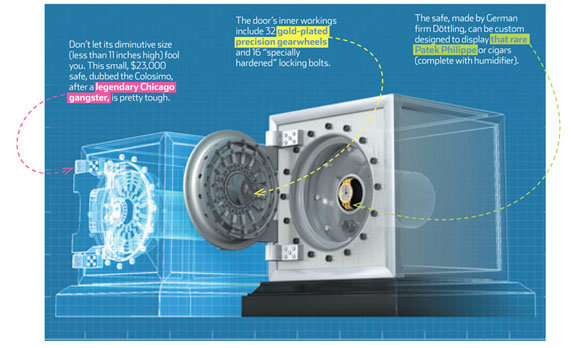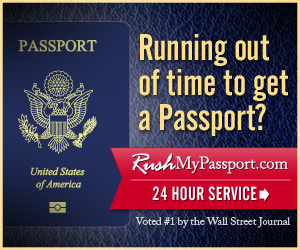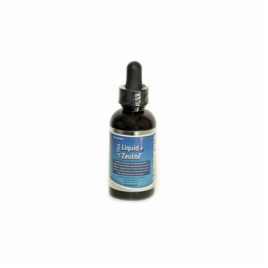Have Americans lost trust in banks?
More folks are keeping valuables at home, whether in room-size vaults or under-bed safes.
By Charles Passy | SmartMoney – Thu, May 3, 2012 10:58 AM EDT
When Carlos Felipe decided to shop for the ultimate night's sleep, he headed to the New Jersey showroom of Hollandia, an Israeli manufacturer that creates custom beds running as much as $35,000. And sure enough, Felipe, a sales representative, found plenty of appealing features and options, from the adjustable bed frame powered by German-made motors to the hypoallergenic, antimicrobial latex mattress (the cover is "treated with aloe vera for a soft feel," Hollandia boasts). But the accessory that most caught Felipe's eye was designed to help him rest easy in a different way. It was a small safe, good for holding a few valuables or gold coins, ingeniously built into the base of a bed -- a modern-day answer to the idea of stashing your savings under a mattress. A duly impressed Felipe plans on using it to store his wife's jewelry and some extra cash: After all, he asks, what thief would look for such valuables in the frame of the bed itself?
In an era marked by financial turbulence, it's probably not surprising that safes have become a popular commodity, with some manufacturers, retailers and installers reporting sales increases of as much as 40 percent from a few years ago. But the bigger eyebrow-raiser is what has happened to those iconic gray-steel boxes of yore: They've undergone an extreme makeover -- or several of them. Taking the place of those old square combination jobs are a range of custom safes, from boutique showpieces to decoy models for the family den -- not to mention the truly offbeat (a hideaway lockbox resembling, ahem, a pair of men's underwear) and the seriously safe (an in-home vault with a price tag of more than $100,000). And that's not even getting into the ever-broadening array of color choices (champagne marble, anyone?) "None of our safes should be hidden in a closet," says Markus Dottling, principal at Dottling, a German specialty-safe manufacturer whose museum-worthy designs can cost more than the average American house.
The more valuable the treasure, the more complicated the box. For Richard Krasilovsky, owner of Empire Safe, a New York retailer that's been in business for more than a century, that means an emphasis on customization: A safe can be designed to fit into any space -- beneath a staircase, inside a closet -- with appropriate finishes and fronts (say, European ash burl wood), and interiors can be crafted to suit the needs of the buyer. There's also a steady market for James Bond worthy "diversion" or "decoy" safes -- like those fronted by bookcases or curio cabinets. Customization has its costs, certainly. Krasilovsky says a job can run $3,000 and up -- way up, especially for the small coterie of customers who want a safe that can stand front and center as an objet d'art. Need a secure place to store your cigars? Dottling, the German manufacturer, suggests its $23,000 Colosimo safe, a tabletop model that's billed as "the smallest high-security safe in the world." "It's a toy for big boys," says owner Markus Dottling.
Pessimists like precious metals collector Don Magnus, though, aren't looking for toys; they want their safes to be simple, bulky and Armageddon-ready. "I'm worried about the banks crashing," says Magnus, who's keeping his stash of gold and silver bullion in a $200 home safe, bolted to the concrete floor of his basement. By his estimate, gold will climb to $5,000 an ounce, and in a financial panic, consumers won't get access to their bank accounts for a "long period of time, if ever." After a nasty one-two punch in recent years -- a bad hurricane near his home, then the financial crisis -- North Carolina contractor Pat Brabble spent $9,500 on two plain but very large safes, including one "you could fit five people in," he says. The safes hold gold, silver and cash totaling about $7,000 in value, Brabble says. He's also holding on to about 50 bottles of Jack Daniels. "I don't drink," he says, but "if things do fall apart, I've got something I can trade with."
For their part, security experts say that a more expensive or elaborate safe is not necessarily a safer safe. Most take a dim view when it comes to "diversion" concepts, because they often rely more on trickery than on, say, state-of-the-art locks. "You don't replace security by obscurity," says Christopher Falkenberg, president of Insite Advanced Security Management in New York. Antique safes -- a hot-selling category -- pose a different issue in that they tend to be built less sturdily than high-end safes today. Guy Zani Jr., an antique safe collector and dealer in New Port Richey, Fla., who owns about 100 safes, notes that some highly prized 19th-century safes are made with wood. "You could take a fire ax and go right through the side," he says.
That said, the pros in the field generally agree that you're better off safe than sorry -- and that many folks are more likely to use a safe if it's attractive. Which is precisely the way Zani, the safe collector and dealer, feels about the vault in which he stores his "mad money" (about equal to a house payment or two). It's a safe he considers a true work of art: an 1867 model with a hand-painted exterior covered in 22-karat gold leaf. Zani estimates the safe is worth $10,000. But it's also a mini-fortress, protecting his stuff behind nine layers of steel plate. (The door alone weighs 500 pounds.) "It's the difference," he
Thanks to My Good friend Dave
http://finance.yahoo.com/news/more-americans-stashing-cash-in-home-safes.html?page=2
